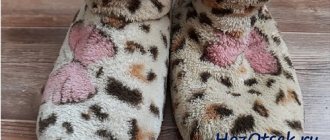The raincoat in a woman's wardrobe varies in models, styles, and colors. Each girl chooses the appropriate option for herself, taking into account her existing needs. At the same time, an exciting question often arises: how to wash a raincoat? By carrying out the procedure taking into account certain nuances, it is possible to extend the life of clothing, which can remain beautiful and dignified for a long time.
Important rules for washing a raincoat
Dry cleaning is a classic method that allows you to restore the beauty of an item. Experts will determine the appropriate cleaning method, which will preserve the original properties of the clothing and its quality.
If you do not want to spend money on the procedure, wash your raincoat at home, taking into account the recommendations.
Examine the label on the side seam of the item. Important care information is printed on the label.
Well-known manufacturers always provide important recommendations to increase the chance of a successful procedure.
What aspects should be taken into account?
Washing type. In most cases, machine washing is dangerous. Water temperature. Type of cleaning agent, powder.
If you refuse to follow the recommendations, you risk losing a stylish wardrobe item.
Instructions for cleaning a raincoat in a machine
The first thing we always look at is the manufacturer's label. Washing parameters mainly depend on the material of the raincoat. Thus, lightweight fabrics such as cotton, linen and polyester are the most unpretentious and can withstand machine cleaning without any problems. It is strictly forbidden to load a leather or wool product into a drum, otherwise the item will be irrevocably damaged. The label will also show all the conditions for washing in a machine:
- delicate mode with a temperature of 30-40 degrees;
- refusal of automatic drying;
- minimal spin or turning it off.
After setting up the machine program, you can proceed to preparing the raincoat itself. It should be inspected, cleaned with a special roller, and if necessary, treat problem areas with a stain remover or soap solution. Don't forget to check all the rivets, fasten the zippers and turn the product inside out. Ideally, you need to place your outerwear in a protective mesh bag, or, at worst, in a pillowcase or duvet cover.
How to wash by hand?
When deciding to wash an item by hand, pay attention to the temperature and type of wash.
Select the appropriate detergent based on the material of your clothing.
For example, models made from lightweight fabrics can be washed in warm water. It is recommended to add a small amount of washing powder. It is not advisable to wring out and twist the raincoat if you want to preserve the original properties of the fabric. After you wash the item, shake out the excess water and then hang it on a hanger. To avoid extra drops on the floor and keep your apartment clean, dry your raincoat over a bathtub or over a basin.
Do you want to speed up the drying process of your raincoat? Open the room to allow air circulation.
After the item has dried, iron the coat. Remember: ironing on the front side is not allowed. Heat the iron to 110 degrees, maximum 125.
How to wash a raincoat fabric
Raincoat fabric is the most common material used when sewing a raincoat. These items can be washed either by hand or by machine.
In this case, a temperature regime of up to 40 degrees is used, and for clothes with poor-quality and unreliable dyeing, water with a temperature of no more than 25 degrees is used. At higher temperatures, such raincoat fabric will delaminate and disintegrate or fade.
To prevent creases, crumpled areas and folds from appearing on the raincoat fabric, do not squeeze, wrinkle or rub the fabric during and after washing. Rinse the clothes well and hang them in the bathroom to drain.
Then it is better to hang the raincoat in a room with good ventilation or fresh air. You need to dry the raincoat fabric in a vertical position on hangers, sometimes pulling and straightening the fabric.
Ironing such a raincoat is also not recommended. In exceptional cases, you can steam clothes or iron them from the reverse side at the lowest temperature. You can read more about how to wash and iron raincoat fabric by following the link.
Polyester raincoat
Manufacturers most often recommend dry cleaning only, since polyester is highly sensitive to external factors. Despite this, people try to carry out cleansing activities on their own. Various cleaning methods can be used, but in each situation the rules must be followed.
For polyester, machine wash. If you have enough time, carry out the procedure manually. Fill the water, the temperature should be slightly warm, and wash. Remember: the powder must be suitable for synthetic materials, such as polyester. Dirt leaves polyester quickly, so it is not necessary to wash the raincoat for a long time. In any case, carrying out the procedure yourself is a tedious task, so give preference to a modern washing machine.
How to wash a raincoat in a washing machine? The optimal program is synthetics or delicate wash. By selecting the appropriate program, the equipment will set the appropriate parameters, increasing the chances of success. The recommended temperature for washing is 30 degrees. Spinning should be carried out at minimum speed, as otherwise there is a risk of damage to the seams or the fabric itself. For powder, choose a universal product or a product designed specifically for synthetic materials. For a bright or dark coat, choose a powder designed for colored materials. For effective washing, use conditioner, which improves the properties of the material and gives additional softness. An additional rinse will help remove detergent residue successfully.
The raincoat must not be twisted or wrinkled, otherwise you will ruin the shape of the item. This recommendation is of great importance, since unnecessary actions can spoil the result. Dry the raincoat on hangers. This option will retain the shape of the item.
Ironing is not recommended. But if you still want to give the raincoat its original appearance, choose the minimum temperature. Use a damp cloth. The procedure should correspond to ironing items made of silk. A manual steamer will allow you to iron your coat in the shortest possible time.
Is it possible to iron and steam?
If properly dried, a bologna jacket does not even need to be ironed. But if the item that has been lying around is wrinkled, you can smooth it out using steam or an iron.
- You can straighten a bolognese product with steam by hanging it in the bathroom and turning on hot water, from which steam emanates. By saturating the material, it will straighten out all the folds.
- Using an iron, the item is ironed from the wrong side through gauze. The temperature is set to the lowest, steam generation is turned on.
If you don’t have the desire or ability to iron a jacket or raincoat yourself, you should resort to dry cleaning services.
Raincoat: wool and polyester
How to do laundry in this situation? Does the procedure become more complicated? The combination of two materials makes the raincoat practical and allows you to wear clothes in cold autumn. Wool helps retain warmth and softness, while polyester increases strength, reduces shrinkage and the risk of clothes becoming wrinkled.
It is advisable to wash it rarely, as otherwise the raincoat will cease to be beautiful: pills will appear and the shape will be lost.
Wash the raincoat by hand or in the “Delicate Wash” mode. The water temperature should not exceed 35 degrees. Use a special powder that is designed for wool. To preserve the original properties of clothing, use conditioner. Set the spin cycle to a minimum without putting unnecessary stress on the raincoat.
Hang the clean item on a hanger above the basin or bathtub. If the clothes dry in this form, the stylish appearance will remain.
Hand wash and dry clean
It is advisable to wash raincoats made from other materials rarely and only by hand. Use cool water at a temperature of 30-35 degrees and mild liquid detergents for delicate fabrics.
Dilute the product in water, immerse the item in it and rinse lightly. Do not rub the material too much! After this, rinse the raincoat thoroughly in cool water with vinegar or conditioner.
The washed item is carefully wrapped in a terry towel or sheet and absorbs excess moisture. Then the raincoat is laid out on a dry towel or sheet, the folds are straightened and dried in a horizontal position in a well-ventilated area. Do not leave things exposed to ultraviolet radiation or near heating devices!
Some fabrics, such as leather, suede and 100% wool, should not be washed or completely soaked in water. In this case, experts recommend taking the clothes to the dry cleaner. At home, it is advisable to use only dry cleaning.
Dilute a little liquid soap or solid soap, grated on a coarse grater, in water. Use a soft cloth or sponge with the prepared solution to wipe the surface of the product, paying special attention to the sleeves, cuffs, and collar. Then wipe the raincoat with a damp cloth and wipe dry. Leave the clothes to dry on hangers.
To remove strong stains, serious dirt and greasy areas, use a solution of ammonia and vinegar or glycerin. You can sprinkle talc, potato starch or salt on problem areas. Leave the powder for 1-2 hours, after which remove the residue with a brush.
Wool coat
It is recommended to use a soap solution for cleaning. Remember: your job is to clean your clothes.
Washing a woolen raincoat in washing machines is prohibited.
Carefully lay out the raincoat on a special table. Clean using a coarse bristle brush and soapy water. The minimum water temperature is thirty degrees, the maximum is forty degrees.
The next step is to rinse the raincoat using clean water and hang it on a hanger.
Have you noticed a change in the shade of your clothing? Update the color scheme of a raincoat that can become vibrant. To do this, use vinegar. Mix 2 tablespoons of vinegar and half a glass of plain water. Use the solution to wipe the item with a soft sponge.
Heavy contamination requires the use of dry powder. Use a sponge to easily remove dirt.
How to store it correctly and keep it clean longer
To reduce the need for washing, you need to know the rules of storage and care:
- When coming from the street where it is raining or snowing, the jacket or raincoat must be dried immediately by hanging it on a hanger in a ventilated place.
- Any stains that appear must be removed while they are still fresh. Once absorbed into the fabric, they will be much more difficult to get rid of.
- The item should hang on hangers, it should not be folded or bent.
- For the summer, bolognese jackets and raincoats must be placed in a special clothes bag and hung in the wardrobe.
Washing at home
What recommendations should I take into account?
Light and thin items can be washed without special recommendations, following the instructions on the label. When washing items made from complex fabrics, avoid washing with complete soaking of the clothes. When washing a woolen raincoat, make sure the inner lining remains dry. For minor stains, soak the raincoat and clean the stain. Use water and stain remover, but do not wet the clothes.
Remember: the above tips are a guarantee of maintaining a stylish raincoat, the shape and structure of the item.
What happens when the raincoat no longer stays dry?
After prolonged use, especially in harsh conditions, your jacket may lose its effectiveness completely. You'll see the jacket is completely damp on the outside, but it will feel like you're constantly walking around in a damp room. The jacket will not be wet on both sides, but you will not feel completely dry and comfortable inside the jacket.
This means you must thoroughly clean and resurface the jacket. As mentioned earlier, you can find some excellent sprays and waxes on the market that keep the finish of waterproof shells current. Everything needs constant maintenance and these jackets are no different.
Image credit: outdoorsmagic.com
When your jacket stops repelling water, it's time to cool it down. Get some DWR - Durable Water Repellent - cooling products and use them on the surface of the jacket. It usually comes in spray or wax form, but whatever you choose, make sure it's a good product that works.
After completing all of the above, after removing the cover from the car when it is probably half dry, add water repellent material. Cover each point of the jacket and if you feel like it needs some extra care, feel free to apply a little more wax or spray there. Then hang it as above: in a dry and preferable area with air flow.
How many times can I wash my raincoat?
Well, basically forever. There is no washing limit on fabric, so the correct answer is: until the fabric can withstand the pressure of time. Different companies' clothing is stronger and more durable, so it may be worth spending a little more on items that last longer than others...
Image credit: whalleyoutdoor.co.uk
Different jackets can withstand different numbers of washes. Some will tolerate more rain and use more. The washing itself and subsequent maintenance are things that can only give your jacket more life, but if you do it too often, it will be counterproductive.
Did you wash your jacket incorrectly???
It's not a tragedy, don't worry. You won't have to throw it away, but you will have to put in extra effort to get back into the previous state. Yes, some products can completely damage your jacket, but this doesn't happen too often.
What you should do is follow the steps mentioned above. You will need to treat the jacket as if it had been exposed to a severe storm and wash it properly from the start. If you've made a lot of mess, you may have to do all the steps two or three times until you get the jacket in the condition you like.
Follow the basic rules
Before you start washing, it’s worth getting acquainted with a few basic rules for caring for raincoats. They are simple, but you must remember them.
- Raincoats made of natural silk, wool, viscose and nylon will not withstand a machine gun. They are only allowed to be hand washed and dried with towels in a horizontal position.
- Products made of leather, suede and with fur inserts are prohibited from being machine washed - only dry or dry cleaning is possible.
The information provided on the product label should not be ignored.
- You can't skimp on detergents. It is necessary to purchase delicate compounds without chlorine, aggressive chemicals and abrasives. The best choice would be soft gel-like textures designed specifically for the type of fabric you have.
- “Component elements” - belt, collar, hood, edge - are washed separately.
- Preliminary dry cleaning is required, as well as local removal of stains or dirt.
- The raincoat is washed separately from other items.
- Do not exceed the maximum temperature of 40 degrees.
- To avoid streaks, rinse the cape thoroughly, changing the water at least 3-4 times.
- Do not use artificial heat sources, batteries, heaters, or fans when drying. Contraindicated in delicate fabrics and direct ultraviolet radiation.
It is also important to monitor the washing process and make adjustments if necessary. So, if the cloak has lost its primary color after being in the machine’s drum, it is better to try to restore it. Mix two tablespoons of 9 percent vinegar with half a glass of water, moisten a sponge with the solution and gently wipe the material. For “prevention”, acetic acid is added immediately during rinsing - then the color becomes richer and brighter.
Popular questions about washing stitched coats
Another popular selection in articles: questions received from readers in the comments on the Chistyuli-Info website and social networks. These tips will help you cope with a problem that seems to have no solution.
How to remove stains on a quilted coat?
Rinse the coat 2-3 times (depending on the intensity of the stains) in the machine without liquid powder or with the addition of 9% table vinegar.
How many times should I rinse my demi-season coat?
Since clothing is much thicker than winter clothing, once will be enough. If you tried and poured a double portion of powder, then double rinsing for spring and autumn things will be just right.
How to wash a quilted coat for a girl?
Due to the risk of developing an allergy to the powder, either reduce the amount or rinse additionally. Please note that girls' coats are often painted in different colors. Wash at a temperature no higher than 30-35°C, so the colors will not mix.
How many ml of detergent should I use for washing?
Try to follow the instructions: an overdose of products makes it difficult to rinse them out of dense, loose fabric. If there are no instructions, it is optimal to pour 30-40 ml of powder per wash. Thick or dirty coats require doubling the volume.
How to wash a men's quilted coat?
Washing is carried out by analogy with women's. The only difference is the amount of powder and the ability to wash the item in a machine. Men's coats are more voluminous. They are most often painted in dark colors. Consider these points when choosing a washing mode and powder. Add an extra rinse. Use the liquid product, measuring the amount according to the instructions.
How to wash a quilted coat to remove sebum from the down filling?
The following products have worked well:
- Heitemann
- UniPooh
- Dixi
- Domol
- BioMio
Many housewives advise adding shampoo for oily hair to the liquid product, which will help get rid of oil and add a delicate aroma.
What type of quilted clothing do you have?
How to wash a quilted coat without ruining it?
How to wash a quilted coat to avoid unpleasant situations and preserve the fabric? To do this, do not forget to use the following tips:
- Do not wash delicate fabrics with dishwashing detergents, shampoos, or shower gels. There are specialized liquid powders for this purpose.
- If using a machine, load only half of the drum. Keep in mind that the weight of a coat when wet increases approximately twice. With a volume of 5-6 kg, it is better to resort to dry cleaning or hand washing.
- In order not to wrinkle or stretch the material, set the spin mode to 600-800 rpm, no more. If desired and possible, squeeze the item in your hands.
- The appearance of an unpleasant odor from the coat after drying is a sign of mold or the presence of wet areas of the filler.
- Before dry cleaning, shake the coat or lightly beat it with a plastic spatula, otherwise streaks will remain on the fabric. Treatment with a vacuum cleaner, a small broom or a brush from the edges to the center is relevant.
- Sew up places where there are holes, even small ones, before washing. Pieces of filler can get into the drain system or tank and clog the lumen of the hose or filter.
- To prevent a colored coat from fading during washing, add 3 tbsp to the drum. l. 9% table vinegar or anti-shedding agent.
- Soak the coat belt separately in soapy water. At the same time, increase the concentration, since frequent contact of hands with fabric increases contamination.
Steam cleaning a quilted coat
Another gentle method of treating quilts spring-winter, winter-autumn is cleaning with a steam mop, which additionally disinfects the item. An alternative is a manual steam generator.
To steam wash, lay the coat on a flat, hard surface and apply steam to each side. Dry clothes in the shade or wrapped in thick cloth, which is changed several times. Once dry, shake the coat or beat lightly with a beater.
Cleaning collars, pockets, sleeves
- For universal processing, purified gasoline and ammonia are suitable. The products remove greasy shine, fat and dirt. Preparation of the working solution: mix the product with water in a ratio of 3:1, moisten the collar or sleeve with water, blot with a sponge soaked in the agent. After treatment, remove any remaining solution with a cotton napkin.
- Table salt also helps eliminate shine. To do this, wet the cloth with water and sprinkle with crumbs. Afterwards, actively clean with a brush and wipe with a napkin.
- If the coat is light pink, beige, white, sprinkle the material with talcum powder or starch and leave it overnight. In the morning, scrub with a brush.
- Wash your faux fur collar by hand with laundry soap or liquid delicate detergent. When drying the fur, wrap it in a towel several times until the water is completely removed. Subsequent drying should be carried out on a wire rack or dry cloth. Finally, comb the fur.
- Natural fur accepts dry processing. Mix fine salt and starch in equal parts, place the collard mixture in a plastic bag, shake and leave for 30 minutes. After time has passed, vacuum the material.
In what cases is it better to trust professionals?
There are situations when home appliances are unreliable and you should take help from specialists or contact a dry cleaner.
- according to the manufacturer's recommendations;
- white color of the product;
- the presence of difficult to remove stains from fuel oil or oil;
- there is no possibility for independent removal;
- there is no desire to spoil products if you are unsure of your own methods.
Taking good care of your coat, timely cleaning and washing will help extend the life of your favorite item.
What is the difference between nylon and polyester?
How to wash a polyester jacket
Care tips you need to know
Suede products require special care and respect. Do not allow excessive soiling or staining to occur. To do this, the jacket should be regularly cleaned from dust and traces of dirt with a stiff brush.
- It is recommended to treat a new item with a vacuum cleaner to remove dust accumulated during production and transportation.
- For care, you need to have a special brush, one side with rubber bristles and the other with hard bristles.
- For light suede, it is recommended to have a separate brush so as not to leave colored streaks.
- Contaminants from suede are washed off with a sponge or brush, while the clothes are suspended. First, wipe the cuffs, elbows, collars and areas near the pockets. After cleaning, shake the clothes, straighten them and hang them to dry on the balcony or outside. Avoid exposure to sunlight and warm air from the heater. Overdried suede loses its attractiveness.
- Prolonged exposure of suede items to water is not advisable. This causes things to become rigid and shrink in size.
- After cleaning, it is recommended to apply a protective agent to the suede. It will protect against the accumulation of dust, the appearance of new stains and abrasions.
- Urgent measures will help to avoid traces of spilled liquid. It should be blotted immediately with a towel or cotton cloth, being careful not to press it into the surface. The substance must not be allowed to be absorbed into the fibers. After drying, clean the suede with a suede eraser or brush.
- To remove water stains, wipe the jacket with a damp cloth or moisten the suede with a spray bottle and blot with a sponge or napkin. Finally, fluff up the pile with a brush.
- To return the bright color to black or colored suede that is faded or has traces of mold, paint of a suitable tone in an aerosol can will help. Only tint a cleaned and dried jacket without stains.
- Using a water-repellent spray will protect your clothing in wet weather. After all, suede that gets wet in the rain quickly loses its properties.
- Bends and creases on the sleeves formed during wearing are easily straightened out with steam. You can use a kettle spout, a bowl of water, or a steamer. Hold the sleeve over the steam for a few minutes and comb. Overexposed suede can become rough.
- Any traces of blood, ice cream, milk or eggs that appear are removed with running cold water.
- On white suede, yellow stains are removed with a soap solution with the addition of ammonia in a 1:1 ratio.
You need to start removing stains right away. Old stains will be difficult to remove.
Force majeure: how to clean fresh stains from a jacket?
No one is immune from stains, even the most tidy person. A car might splash you on the street, you might get a push on your arm in a café, or a ballpoint pen might leak in your pocket. Regular rain leaves streaks on the skin. What should you do if you get a greasy stain on a leather item, stain it with ink or blood, or splash it with street dirt?
If the product gets exposed to street dirt
To clean a white leather item from dust and dirt at home, you can use:
- Laundry soap. A bar of soap is grated. Dilute 1 tablespoon of soap shavings in 1 liter of water. Wipe the contaminated area with a cotton swab dipped in soapy water. After this, wash off the soap with clean cool water and wipe the skin dry with a terry towel or napkin.
- Milk. It has a whitening effect and will help restore a dirty, dusty jacket to its original appearance. Pour a teaspoon of turpentine into 1 liter of milk and wipe the contaminated area with the liquid.
- Protein with lemon. Egg whites and lemon juice will help get rid of stains that are deeply embedded in the skin. Beat 1 white until foam forms and add 3-4 drops of lemon juice. The paste is applied to the stain and then wiped with a dry cloth.
How to get rid of greasy stains?
What to do if you get a greasy stain on your leather jacket? Several remedies for removing oil impurities from the skin at home:
- Glycerol. A soft cloth is moistened in glycerin and the greasy area is wiped with it. Glycerin dissolves fat. It also restores the original shine of the leather, so it can be used to wipe old, already cracked items.
- Ammonia. Dissolve a few drops in soapy water and rub it onto the greasy stain. Ammonia can dry out the skin, so after treatment you can lubricate the cleaned area with Vaseline.
- Liquid dishwashing detergent. The formula of such a product is just suitable for the breakdown of fats. A few drops are applied to the oily area and rubbed into the skin. After a few minutes, wash off with warm water.
How to clean blood or ink stains?
Blood stains are very difficult to wash off, so you need to get rid of them immediately after they appear. You should not try to wash off blood in hot water, this will lead to an increase in the area of contamination and fixation in the material. To wash skin stained with blood, it is recommended to use:
- Hydrogen peroxide. Using a moistened cotton swab, carefully wipe off the blood from the edge of the stain to the center. However, you should be extremely careful; hydrogen peroxide can damage the leather, so you should test its effect in advance on an inconspicuous area of the item.
- Acetylsalicylic acid. Aspirin has blood thinning properties, so it can be used to clean clothes. 1 tablet is dissolved in a quarter glass of warm water. The paste is applied to the contaminated area and left for 5–10 minutes. Then the mixture is removed with a dry cloth or rag.
Preparation
- We check the resistance of the fabric to detergent. When purchasing clothes, along with spare accessories, the manufacturer puts in a small piece of fabric from which the product is made. It is necessary for testing the product that will be used for washing. Apply a little and watch the reaction: if there are no changes in structure and coloring, then this type of powder can be used when washing coats;
- Remove all detachable decorative parts: belt, fur inserts, metal badges, cuffs;
- Check your pockets. Keys, lighters, coins, paper clips, pens, buttons and any other objects can damage not only the washing machine, but also the coat itself;
- Fasten all buttons and zippers and turn the outfit inside out;
- Place in a washing bag.
Tip: pay attention to the information on the label. The usual cleaning temperature for polyester clothing is 40º, but sometimes the manufacturer reduces it to 30º, or increases it to 60º.










